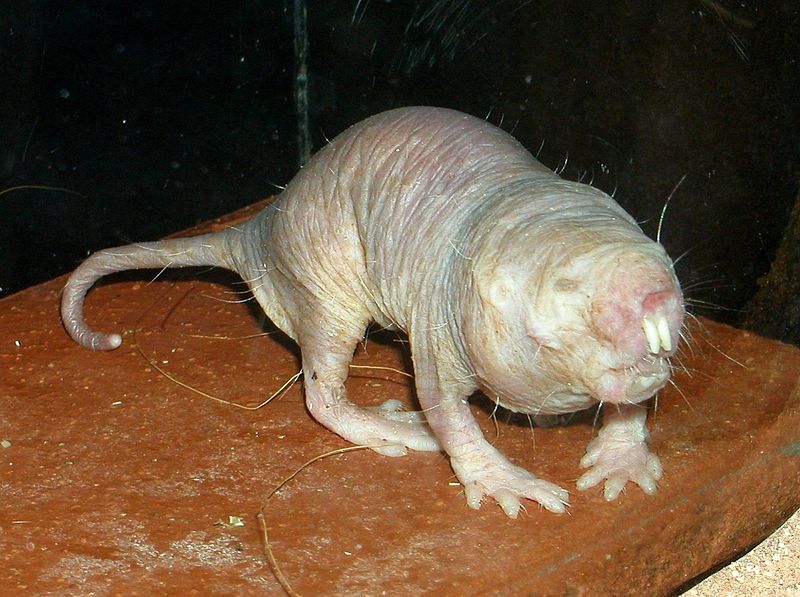Naked Mole Rat Facts
- Firstly, many people consider the fascinating Naked Mole Rat to be among the least visually appealing creatures on Earth. However, it nevertheless remains a remarkable animal.
- This is true due to, among other reasons, the fact that it has evolved an unprecedented characteristic. This amazing creature is completely incapable of feeling physical pain, unless its skin is breached.
- Further, it even deserves another nod for accomplishing the unusual. This admittedly odd looking animal remains one of only two known eusocial mammals in the entire world.
- Finally, the Naked Mole Rat is also surprising agile and nimble. This bizarre species has the uncanny ability to move either forward or backward in its burrow with equal speed.
Related Articles
Naked Mole Rat Physical Description
Most notably, the incredible Naked Mole Rat remains a rather small animal. Further, it shows no noticeable degree of sexual dimorphism, except in the case of the queens.
Firstly, individuals of both genders, with the exception of the queen, average about 4 in (10 cm) in length. Furthermore, each averages about about 1.2 oz (35 gr) in weight. The aforementioned queens are, of course, larger and weigh about 1.8 oz (50 gr), however.
Also, the legs grow thin and comparatively short, providing agility in its environment. In addition, the large, protruding teeth are used for digging, while the eyes remain small and the vision poor.
- Kingdom: Animalia
- Phylum: Chordata
- Class: Mammalia
- Order: Rodentia
- Family: Heterocephalidae
- Genus: Heterocephalus
- Species: H. glaber
Naked Mole Rat Distribution, Habitat, and Ecology
First of all, the remarkable Naked Mole Rat evolved as endemic to only the driest portions of one area. This area consists of tropical grasslands in East Africa, predominantly in Kenya, Ethiopia, and Somalia.
Furthermore, the animal typically feeds principally upon large tubers that it finds in its tunneling. In addition, a single large tuber may feed an entire colony for months, possibly even years.
This is because the species has developed the habit a unique strategy. Individuals eat the inside of the tuber, while leaving the outside intact, allowing it to continually regenerate.
It also lives in colonies, which average between 30-300 individuals, in underground burrows. The smaller workers primarily work within the tunnels of the colony, while the larger ones function principally as guards, protecting the colony from attackers.
The animal has further, perhaps to its detriment, become a centerpiece of scientific research in recent years. This occurs since it lives many times longer than any other rodent, and may show resistance to cancer.
Species Sharing Its Range
Check out our other articles on 7 Astounding Polar Creatures, Bobbit Worm, Golden Armadillo Lizard, Indian Pipes, Thorsmork, Fire Ant, Laotian Giant Flying Squirrel, Australian Sea Lion

